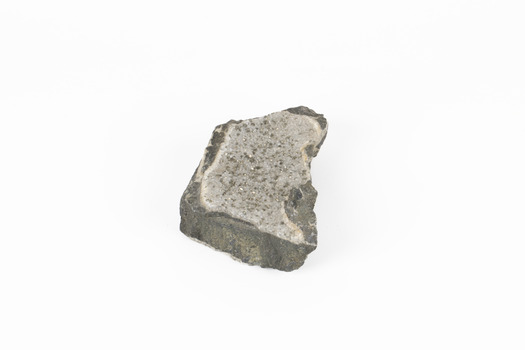Historical information
Pyrite also known as iron Pyrite or fools gold is an iron sulfide with a chemical formula of FeS2 and is the most abundant sulfide mineral. Its metallic luster and pale brass-yellow hue give it a superficial resemblance to gold for which its nickname of Fools Gold comes from.
There are a number of iron pyrite mines in Victoria and many would have been mined during Victoria's Gold Rush revolution in the 19th century. As it's lustrius yellow metallic look closely resembles gold, it is likely that it was often mistaken for gold as real gold was also often found in similar metamorphic and sedimentary rock.
Significance
This specimen is part of a larger collection of geological and mineral specimens collected from around Australia (and some parts of the world) and donated to the Burke Museum between 1868-1880. A large percentage of these collections were collected in Victoria as part of the Geological Survey of Victoria that begun in 1852 (in response to the Gold Rush). Collecting these specimens was an important part of Australia's early Geoplogical scientific discovery for mapping the earth's surface.
It is unknown where in Victoria this specimen was mined from however; it shows strong provenance connections to Victoria's gold mining history and represents through larger economic and cultural structures the impact the Gold Rush had on Victoria during the 19th century.
Physical description
A solid coin-sized Pyrite crystal in black slate in shades of beige with tiny crystal structures.
Inscriptions & markings
Pyrite / crystals / BB / in black slate / probably / victoria / (nice specimen)
Subjects
References
- Goldfields Guide: Exploring the Victorian Goldfields. Internet source detailing the significant differences in Pyrite and Gold.
- Geological Survey of Victoria Internet source detailing Victoria's Geological Survey.
- Map of Iron Pyrite Mine VIC. Internet source showing maps of Pyrite mines in Victoria, Australia.






